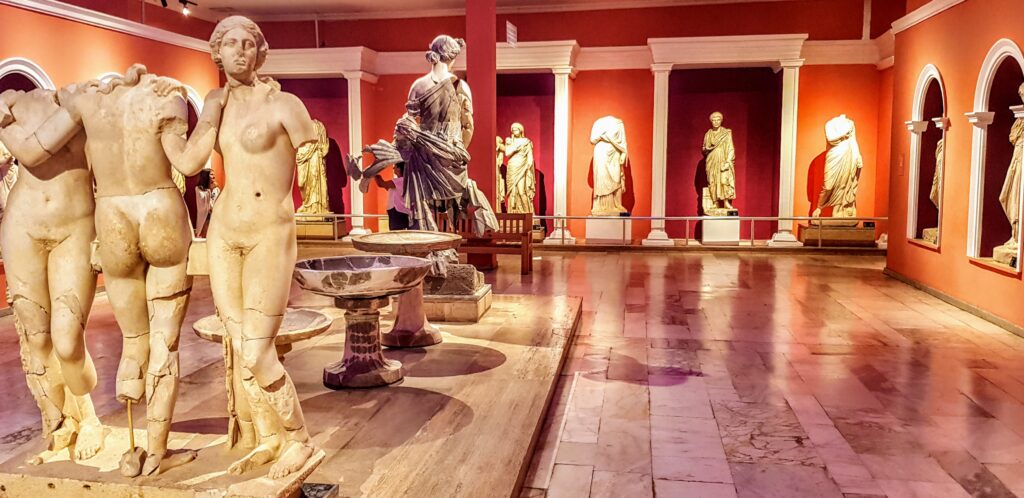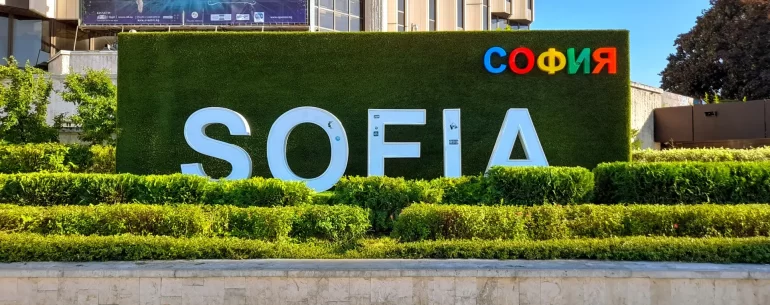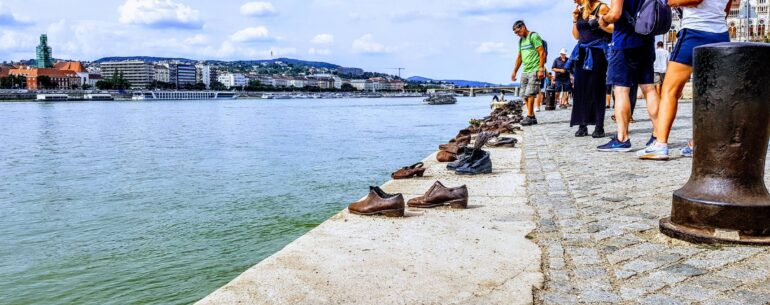Antalya Museum (Antalya Muzesi) is conveniently located just above the popular Konyaalti beach and 2km from the old town of Kaleici, making it super easy to get to for most holidaymakers. If you’re in the area on holiday, plan an afternoon to make the most of one of Turkey’s largest museums. It takes at least a couple of hours to properly explore the 13 exhibition halls and 5,000 works. Scroll down for the full guide, picture gallery and 360VR images.

Find the best accommodation deals in Antalya now
We’ve teamed up with the accommodation specialists, Booking.com, to bring you the best deals on accommodation in Antalya this season.
Check for the best flight deals to Antalya
Find the best prices on flights direct from your nearest airport using the form below. Note, if results aren’t showing your closest airport, just follow the link for more options.
Antalya is rich in history and has been home to countless civilisations, each leaving their indelible mark on the area. The Antalya Museum has countless artifacts ranging from the Stone Age through to Byzantium, including impressive statues from the Roman area.
Antalya Museum was selected as Museum of the Year in 1988 by the European Council and has also received an Award of Excellence due to its vast collection. Depending on how long you spend in each room, you’ll need at least two hours to get around the various halls and showcases.
Also, don’t forget to leave time for the outdoor artifacts. A word of warning – the first few rooms feature mostly pottery and coins whereas the more impressive statues etc are located a little further into the museum. If you plan on arriving late (as I did) be aware that it’s easy to lose significant time in the first part of the museum – leaving less time for the other rooms.
All exhibits feature good English descriptions – though audio guides are also available at the entrance desk.
Modern-day Antalya mostly promotes itself as a holiday resort but, really, a trip to this museum will give you a far greater understanding of the historical significance of this area – regarded by many as a cradle of modern civilisation. Rather than just spending every day on the beach or by the pool, take a break and try to find time to visit.
Click here for other iRide summer guides
Click here for more information about Antalya museum
Essentials
Price – Noted online as 45TL
Open Tuesday to Sunday (closed Monday)
Opening hours (1st April – 30th Sept) – 10.00-17.00
Opening hours (1st Oct – 31st Mar) – 08.30-18.00
Facilities – On-site coffee shop and multiple bars/restaurants nearby
Getting there
Find accommodation in Antalya Konyaalti beach
We’ve teamed up with the accommodation specialists, Booking.com, to bring you the best deals on accommodation in Antalya Konyaalti beach.
A Brief History of Antalya Museum
Antalya Museum, also known as the Antalya Archaeological Museum, was established in 1922 and is one of Turkey’s largest and most important museums. Its collection spans thousands of years of history, from the prehistoric era to the Byzantine period, and showcases the rich cultural heritage of the region.Discovering Antalya Museum: Must-See Attractions
Personally, I could have spent at least a few days in this museum, there’s so much to see. However, some standouts are listed below that you should try and find within its labyrynthian walls.- Hall of Statues: Explore the Hall of Statues, where you’ll find an impressive collection of ancient sculptures dating back to the Hellenistic and Roman periods. Marvel at lifelike marble statues of gods, goddesses, and mythological figures, each intricately carved and preserved.
- Sarcophagus Gallery: Step into the Sarcophagus Gallery, home to a stunning array of intricately decorated sarcophagi from ancient Lycian, Greek, and Roman civilizations. Admire the intricate reliefs, scenes of daily life, and mythological motifs that adorn these funerary monuments.
- Prehistoric Gallery: Journey back in time to the prehistoric era as you explore the museum’s Prehistoric Gallery. Discover artifacts from ancient settlements, including pottery, tools, and decorative objects, that offer insights into the daily lives and customs of early Anatolian peoples.
- Coins and Jewellery Exhibits: Admire the museum’s collection of ancient coins and jewellery, which provide glimpses into the economic and social life of past civilizations. Check out the intricately crafted gold and silver jewellery, as well as rare coins minted by ancient Greek, Roman, and Byzantine rulers.
- Mosaic Pavilion: Step into the Mosaic Pavilion, where you’ll find a dazzling display of ancient mosaics dating back to the Roman and Byzantine periods. Admire the vibrant colours, intricate patterns, and detailed scenes depicted in these stunning works of art.
- Children’s Museum: Bring the kids along to explore the Children’s Museum, a dedicated space where young visitors can learn about archaeology and history through interactive exhibits and hands-on activities. Admission to the Children’s Museum is included with the general ticket.
- Guided Tours: Join a guided tour of the museum led by knowledgeable experts who will provide insights into the exhibits, archaeological discoveries, and historical significance of the artifacts on display. Guided tours are available in multiple languages and are included with the admission fee.


